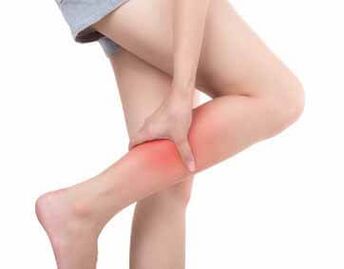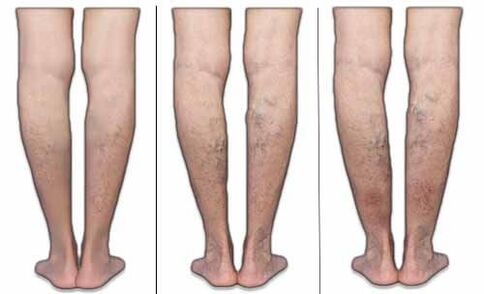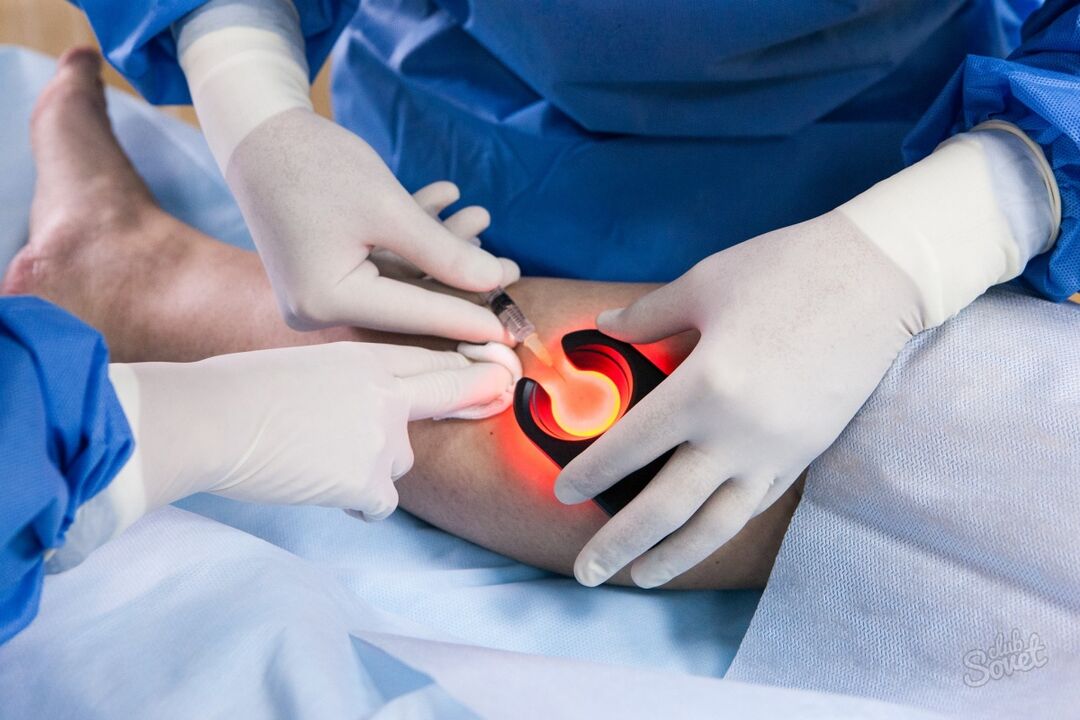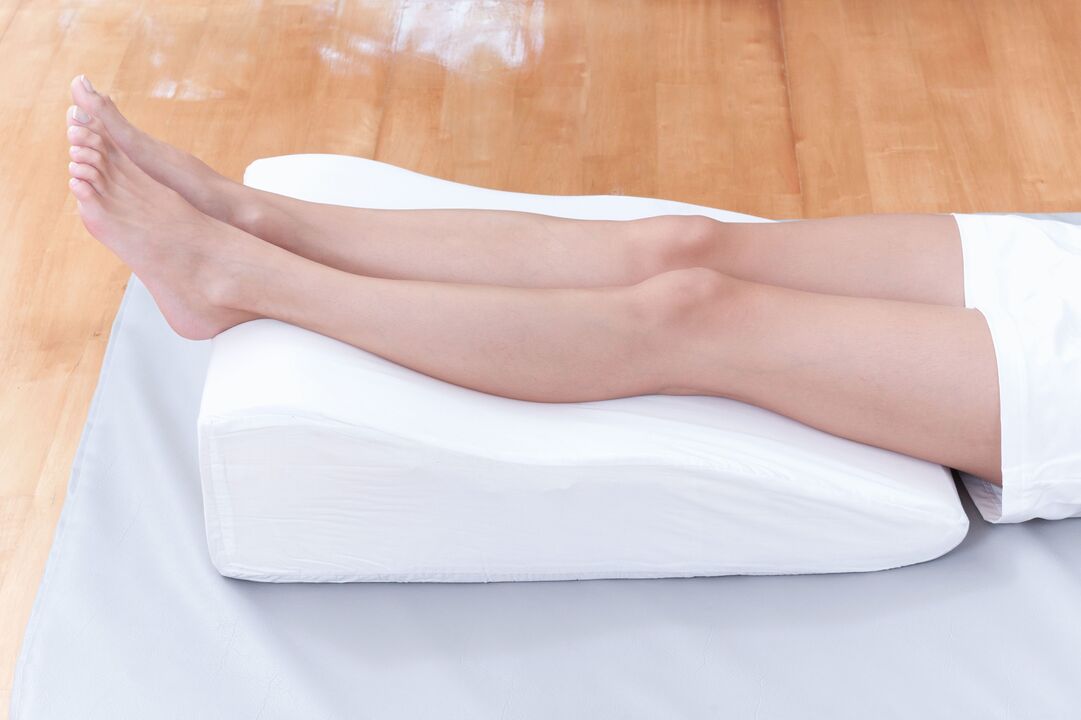Varicosis is a systemic disease that can affect vessels in any part of the body. Its essence is the dysfunction of the valve that control the direction of blood flow. Therefore, there is an accumulation of excessive volume of fluid in veins, influenced by the walls extend and lose elasticity.

The most common medical publications focus on symptoms and treatment of varicose veins on their feet, as this various disease is considered to be the most common: According to statistics, more than 80% of all cases of varicose veins are right in the lower limbs. However, despite that, for most patients diagnosis of varicose veins is a surprise, and its discovery occurs in later phases. All this indicates insufficient awareness of people about the dangers of varicose veins.
Features, causes and mechanism of varicose vein development
The main feature of varicose veins of the leg is its size. Changes are subject to superficial and deep run over veins on a large length. Since there is quite large and long loads on their feet, the valves in the circulation system can begin to weaken in childhood. Therefore, the detection of varicose veins on the legs often occurs in young people and girls.
These are lower extremities that such a phenomenon is characterized as hidden varicose veins: against the background of pronounced changes in veins and unpleasant symptoms, no visible signs of the disease. Therefore, in approximately a third of all cases, the disease was detected in advanced phases.
In order to perform an effective treatment of varicose nodes on their feet, the doctor will need to find out the causes of his appearance. Since even when radical methods in 80% of patients are used, relapse varicose veins appears, special attention must be paid to reduce the effects of factor processes that provoke varicose veins. They include:
- Hereditary predisposition is actually an uncontrolled factor that can still be restrained by standard preventive measures;
- Physical influences - increased load on their feet (long standing and sitting, habit of crossing legs, excess weight, weight lift);
- Physiological effects - hormonal changes and intake of hormonal drugs (most common contraceptives), metabolic disorders, lack of physical activity;
- Pathological causes are chronic liver, kidney diseases, a kidney, injury and a systematic tractor with soft tissues of lower extremities, tumors, squeezing veins in the abdominal cavity.
Depending on the location of the veins, doctors differ several types of varicose veins on their feet:
- Area. It is expressed by the appearance of a bluish or red varicose network on their feet, which is first reminiscent of the internet, and then plexus quite thick coiled lines.
- Deep. The defeat is expressed that is not visible during the external examination of the vascular plexus. The pain in the veins of the lower extremities with spreading this type is more intense, a higher risk of complications.
- Combined when deep and superficial veins are exposed to changes.
Establishing the causes of varicose veins and its elimination are in a close relationship. First of all, it is important to exclude factors that have the largest negative impact on the state of the vein.
When diagnosing the venal change, it is important to distinguish them to other diseases. For example, varicose veins below the knee looks the same as Becker Cyst, and follow similar symptoms.

Phase
The appearance of the first signs of varicose veins on their feet occurs in progressive phases, when the valves perform their functions for less than 50%. In the first or zero phase of varicose veins, which is known as the "phase of compensation", there is no discomfort, as well as visible changes. Detection of the initial phase of varicose veins on their feet occurs with a careful examination of the fleet of the Fleet.
In the second phase of varicose veins, which is known as "sub-compensation", changes are pronounced pretty well:
- Drafts of large veins are visible under the skin, but may not protrude above the surface of the skin;
- On the surface of the skin on the hips and below the knees, a sample of a thin varicose network from blue or red capillaries is clearly visible;
- Through evening, the legs are swollen;
- At night are the muscles of calf cramps.
This phase of varicose veins of the lower extremities is characterized by increasing symptoms, which is weakened after vacation.
In the last stage of varicose veins, decolenzia is reached: the body cannot complement the needs of tissues in oxygen, and the valves in the veins for 90% lose functions. The state of limbs worsens due to insufficient blood supply. This phase of varicose veins is characterized by reducing the ability of tissue for regeneration. Plenty of complications worsens the patient's general state. Symptoms in the final stage of varicose veins are constantly preserved.
Symptoms
The most common and earlier symptom of varicose veins is the pain in your legs until the end of the work day. It appears by a change in deep and surface vessels, and the signal is insufficiently good blood supply in soft tissues. In some cases, pain is the only symptom of varicose veins of deep veins of the lower extremities. With changing surface vessels, the appearance of varicose veins on their feet, which often creates only aesthetic inconveniences, signals the development of the disease.
The nature of pain with varicose veins in different stages of disease development may vary:
- In the initial phase, there is a light discomfort that resembles ordinary fatigue;
- With progress in the second phase, the burning in the legs appears in feet from varicose veins, which are often localized under the knee;
- Withdrawal with the varicose veins of the lower extremities, the 2 and 3 phases of the disease follows, along with it, can appear calf muscles;
- Acute pain that causes chromium is reached by the end phases of the disease.
In addition to obvious physical discomfort, the disease is accompanied by external changes. Most patients complain that their feet scratches - with varicose veins, this is considered a normal phenomenon that indicates ischemic processes. A thin varicose network that is practically not bothered in the first phases, over time protruding stronger, they pretend to the thick intertwining of thickened vessels. Any physical activity, including cough, sneezing or long walking, can lead to rupture of expanded capillaries, and sometimes veins. Blood pours under the skin, forming hematomas.
The presence of bruises on feet with varicose veins indicates a stable progress of disease, excessive stretching and thinning of veins.
The occurrence of red spots on feet with varicose veins, peels the skin, its thinning and exposure to injuries indicates atrophic processes that are characteristic of the final phase of the disease. Complications are indicated by the redness of the lower leg, which is accompanied by acute pain and chromium. Such a symptom is characteristic of phlebitis and thromboflebitis. If the patient flows with his foot, it indicates a serious vein blockade and the beginning of necrotic processes.

Diagnostics
Ease of diagnosis of varicose veins on their feet is excessive, because the vessels do not always come to the surface. To confirm the diagnosis, the doctor must perform an external review and conduct a range of instrumental research:
- Duplex scanning or ultrasound on the lower cost - for varicose veins, first is used to determine the degree of stretching vascular walls, the nature of blood flow in them and reveals blood clot;
- Radiography of the limb with contrast - standard of functional examination for varicose veins of the lower extremities, which allows you to determine the patient of blood vessels;
- The MRI is a gold standard of modern varicose veins in the lower extremities, which allows you to evaluate the valve functionality for valve, Identify your hot tissue hotplates and other pathological changes that have emerged against varicose veins.
To clarify the overall image of the disease, laboratory studies are prescribed: a coagulogram for the risk assessment of thrombosis, general and biochemical blood test.
Features of treatment
The treatment of varicose veins on the legs is engaged in the fleet. After determining the degree of pathological changes, the doctor selects the most effective, in their opinion, the method of therapy. Unfortunately, it will not work to get rid of varicose veins on their feet forever, because the disease is systematic, and even modern treatment methods give long -tterm, but not 100% stable results.
According to statistics, even after the use of radical methods for the treatment of varicose veins of the lower extremities in 80% of patients, relapse occurs 5 years.
In the initial phases of varicose veins on their feet, treatment is desirable conservative. Its basis is the use of local and systemic drugs:
- anticoagulants that reduce blood viscosity and improve tissue nutrition;
- Anti-alliance that reduces the risk of thrombosis and improve trophic tissue;
- Venotons to prevent further stretching veins, reduce inflammatory processes and swelling.
With the pronounced discomfort for varicose veins on their feet, NSAIDs are prescribed. Preparations of this group help reduce pain, prevent the development of complications.
What to do if it itchy for varicose legs does not allow sleep, you do familiar things and makes you annoyed? It is valuable to try fat or gel with cooling effect. It will not affect the veins and will not help them handle diseases, but it will quickly alleviate the symptom.
In addition to conservative therapy, doctors often use the methods of complex treatment of varicose veins of the lower extremities, when minimally invasive and surgical operations are used simultaneously with medical effects. Such a scheme is used for intensive symptoms and extensive spread of the venous network. What are the measures to take and what to do if varicose veins on your feet are starting suddenly to progress, the fleet decides. At the same time, it takes into account all aspects of disease development, individual characteristics of the body and health problems, which can become contraindications with certain procedures.
What methods are used to remove pathological vessels:
- Laser coagulation. It is used if varicose veins have not moved to 2 and 3 phases, ie in the presence of small "stars" on the skin surface. The method is painless and efficient, but expensive. There is no 100% drain guarantee, as elimination of visible vessels appear, while the causes of the disease are preserved. Apply in early stages to remove cosmetic damage.
- Sclerotherapy. In dark and medium-sized thicknesses, vessels link a sclerosant that lumen vein seal, excluding it from the blood flow system. The procedure is practically painless and relatively inexpensive, but there is a lot of contraindicates. Used on 1, 2, and sometimes 3 phases.
- Flebectomy is a classic excision of pathological veins through punching or cutting cuts. This method eliminates surface varicose veins on the hips and lower legs. After surgery, visible scars remain, but the operation is the only effective with advanced forms of varicose veins.
The implementation of a surgical or minimal invasive intervention does not mean to solve varicose veins completely. The patient will have to visit the Flektologist regularly, take medication for maintaining a venous tone and carry the compression bedding.

Contraindications
Experts are attributes to contraindications for varicose veins on the legs of any action that can cause additional stagnation in the pot of lower extremities. They include:
- Long stay in static pose;
- Lifting weight;
- sitting with bending or crossing your legs.
Also, patients should avoid taking alcohol, which helps increase blood viscosity and weak walls of blood vessels. Smoking can negatively affect the course of the disease. Therefore, after making diagnosis, it is necessary to leave bad habits.
Complications
Thrombosis and inflammatory processes in the walls of the veins, which have previously mentioned, are far from the only one that varicose veins on their feet are dangerous for the patient in terms of complications. Due to circulatory disorders, not only blood vessels, but also soft tissues suffer, among the consequences of varicose veins on their feet, muscle and skin problems are mentioned:
- Dermatitis, accompanied by itchy rash, skin ulceration, itching;
- eczema, accompanied by shooting the skin;
- Necrotic changes in the skin to the formation of a gangrene;
- Trophic sores;
- Muscle atrophy.
Often, with the advancement of diseases and excessive stretching of the walls of blood vessels, patient risks encounter bleeding from varicose veins of lower extremities. It can be as closed when the blood accumulates in the muscles and under the skin and hematoma shaping or open. Another option is full of a large amount of blood and arrival to whom, especially if the patient takes anti-agents and anticoagulants.
This complication of varicose veins of the lower extremities can only lead to injuries, but also a slight physical effort, for example, cough or sharp movement.
The most dangerous complications of varicose veins of the lower limb are pulmonary artery thromboembolism and myocardial infarction. They appear due to the decay of the blood clot into the miserable artery and its migration towards the blood flow system in coronary and pulmonary ships. Mortality in such processes is extremely high, so it is important that the patient always follows well-being and urgently visit doctors with breathing difficulties and chest pain.


















